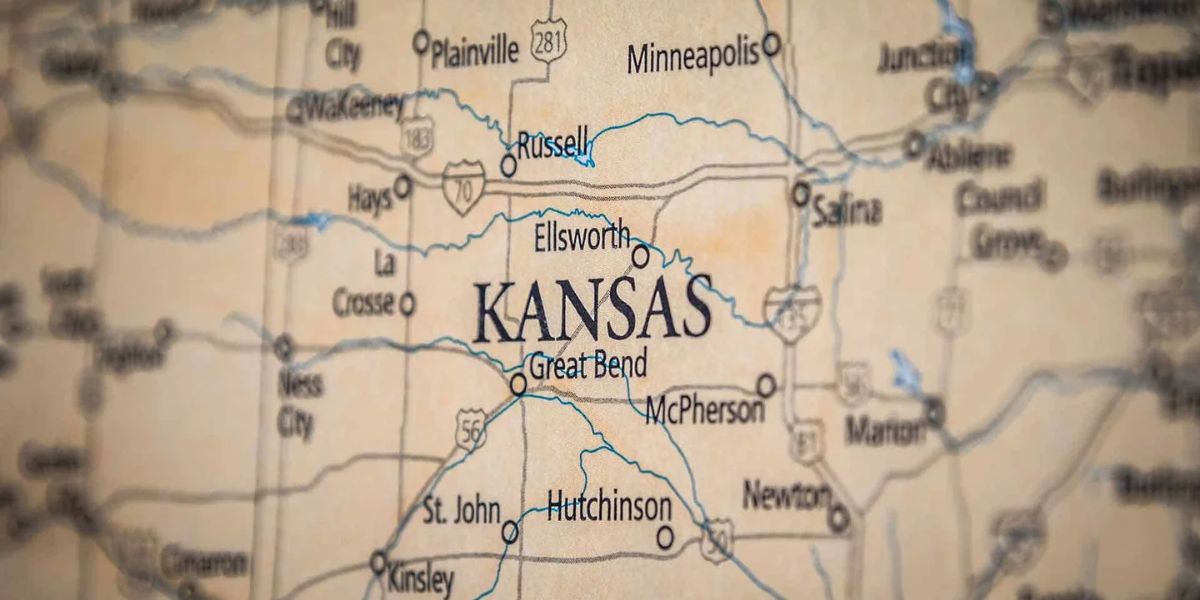What Happened to These Kansas Counties, and What’s the History Behind Kansas’ Changing Landscape?
Some counties in Kansas have not been able to withstand the passage of time; therefore, what happened to them?
The Kansas State Historical Society (KSHS) website lists over 200 counties that no longer exist today. These counties were all dissolved throughout time, and their area became part of the 105 counties that today make up the state of Kansas.
While the reasons for each county’s renaming or dissolution varied, many were abolished because of their ties to the pro-slavery movement or the Confederacy.
1. Washington County: August 30, 1855–February 20, 1857
This county was named in honor of George Washington, the first president of the United States. The county was initially exceedingly wide, encompassing a vast expanse of land in southwest Kansas. Barber, Barton, Clark, Comanche, Edwards, Ford, Grant, Grey, and more than a dozen additional counties currently contain all or parts of the area that was once in Washington County. The name was later transferred to present-day Washington County near the Nebraska border.
2. Richardson County: August 25, 1855–February 11, 1859
The county is named for William P. Richardson, a pro-slavery member of Kansas’ territorial government. Richardson County was eventually merged into Wabaunsee County.
3. McGee County: August 25, 1855–February 18, 1860
Named after Mabillon W. McGee, a Kansas House of Representatives member who supported slavery. In 1860, the county was renamed Cherokee County in response to McGee’s political leanings.
4. Lykins County: August 25, 1855–June 3, 1861
This county is named after David Lykins, a pro-slavery Baptist missionary. Lykins County was eventually renamed Miami County.
5. Godfrey County: August 30, 1855–June 3, 1861
Bill Godfrey, a trader with Osage tribe members in the 1850s, or Gabriel Godfrey, who worked with the Pottawatomie tribe in the 1820s, could have inspired the county’s name. In 1861, the name was changed to Seward County, which became Howard County. Godfrey County’s land is now part of Elk and Chautauqua counties.
6. Otoe County: February 17, 1860 – February 24, 1864
This county was never officially organized and was named after Nebraska’s Otoe (Oto) Native American tribe. A large portion of Otoe County is now part of Butler County, with the remainder going to Harvey and Sedgwick Counties.
“Planning a Trip to Arkansas?” Here are 10 things Arkansans consider deeply DISRESPECTFUL
7. Peketon County: February 21, 1860–February 26, 1867
Initially, this county accounted for more than a quarter of the state’s land. The county’s name has yet to be officially identified, but the KSHS believes it may be related to a Native American phrase meaning ‘flat land.’ In 1867, Peketon County merged with Marion County.
8. Billings County: March 20, 1873—February 25, 1874
The Kansas Legislature renamed Norton County Billings County in 1873, possibly as a prank or to assuage the vanity of state Representative N. H. Billings. The name was altered in 1874 after Representative Billings’ term in the assembly expired.
9. Howard County: February 26, 1867–March 25, 1875
The county is named for General Oliver Otis Howard, a Union army general who led troops in the first and second battles of Bull Run, Gettysburg, and other conflicts. Howard County was founded as Godfrey County and later renamed Seward County in 1861. Howard County ceased to exist in 1875 due to disagreements about the placement of the county seat, which resulted in the county’s land being divided between Elk and Chautauqua Counties.
10. Buffalo County: March 20, 1873–March 13, 1881
It is named after the American bison, the state animal of Kansas. In 1881, townships in the northern portion of the county were removed and added to Lane County, while the rest went to Grey and Finney Counties.
11. Foote County: March 20, 1873–March 13, 1881
Most likely named after Andrew Hull Foote, an American Navy officer who commanded a series of ‘ironclad’ gunships during the Civil War. Foote County was merged with Ford and Finney Counties in 1881 for judicial purposes, and its name was later changed to Grey County.
12. Sequoyah County: March 20, 1873–February 22, 1883
This county is named after Sequoyah, a Cherokee tribal leader who is credited with developing the Cherokee alphabet. The county was later merged with Finney County in 1883.
13. St. John County: March 13, 1881–February 25, 1887
This county is named after John P. St. John, the governor of Kansas from 1879 to 1883. According to a KSHS map, the area from this county is currently part of Logan County.
14. Davis County: August 25, 1855–March 7, 1889
This county was named after Jefferson Davis, the United States Secretary of War who eventually became President of the Confederacy. Davis County lost land to Dickinson County in 1857 and Wabaunsee County in 1860. It gained land from Dickinson County in 1860 and Riley County in 1873 before changing its name to Geary County in 1889.
15. Garfield County: March 23, 1887–March 18, 1893
This county was named in honor of James Abram Garfield, the 20th president of the United States. It was primarily made up of Buffalo County property. Bat Masterson and other deputies were hired to keep the peace in this county in 1887, following a fierce rivalry between the towns of Ravanna and Eminence. The Kansas Supreme Court later ruled in 1892 that the county was improperly organized, and it was absorbed into Finney County in 1893.











